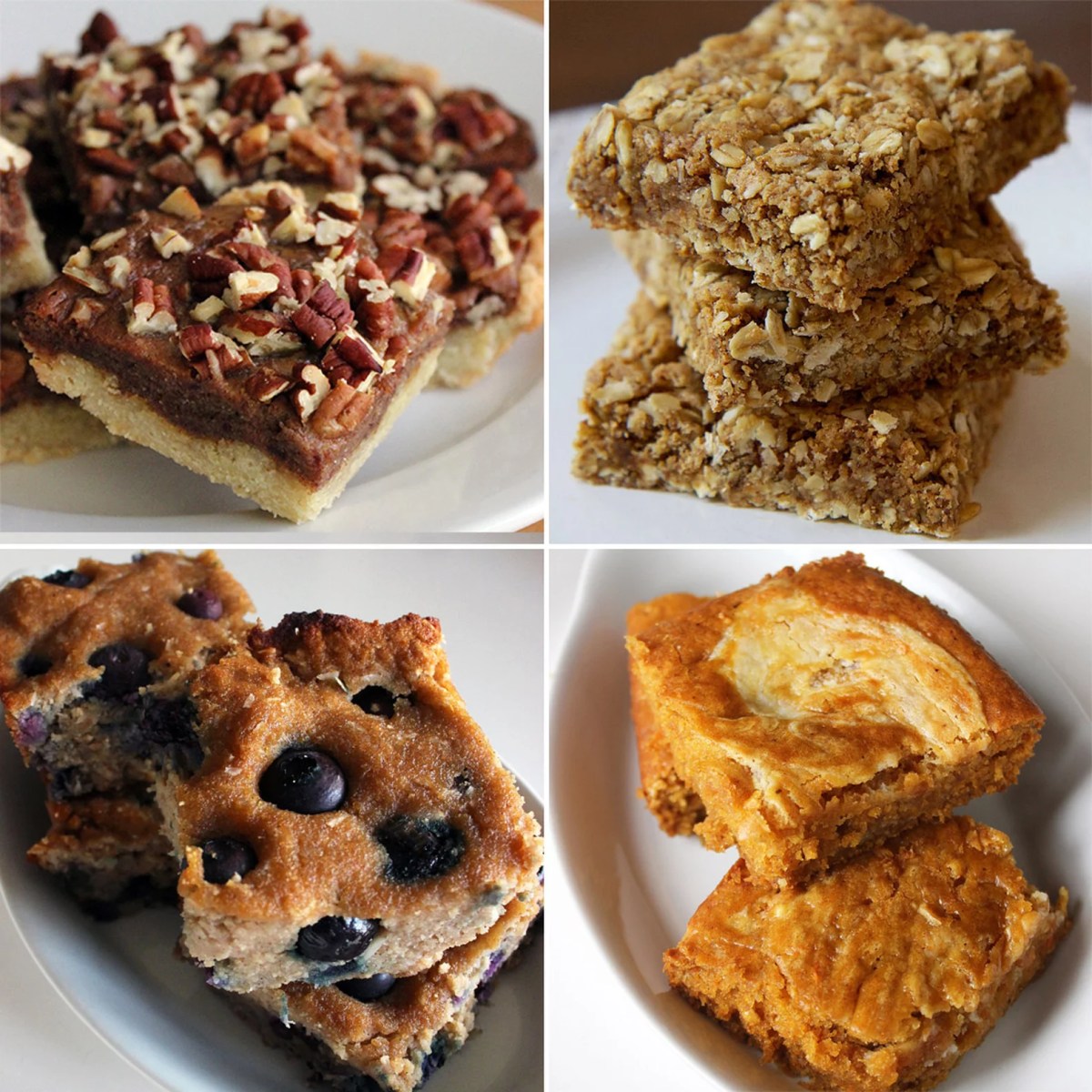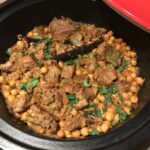Indulge your sweet cravings without compromise! This guide unveils a world of delicious dairy-free and egg-free dessert bars, perfect for those with dietary restrictions or simply seeking delectable treats that are both satisfying and allergy-friendly. Imagine rich, decadent bars bursting with flavor, textures ranging from fudgy to crumbly, and a spectrum of taste profiles to tantalize every palate. Whether you’re a seasoned baker or a kitchen novice, these recipes are designed for success, offering step-by-step instructions, helpful tips, and adaptable ingredient substitutions.
We’ll explore five tempting recipes, detailing their unique ingredients and highlighting the ease of preparation. One recipe will be chosen for a deep dive, showcasing a meticulous step-by-step process, troubleshooting common baking pitfalls, and suggesting creative variations. We’ll also delve into dietary considerations, allergen information, and stunning presentation ideas to elevate your dessert experience to new heights. Prepare to be inspired and ready to create your own sweet masterpiece!
Step-by-Step Instructions for Dairy-Free, Egg-Free Chocolate Avocado Brownies

These decadent brownies are surprisingly easy to make, relying on the richness of avocado for both moisture and a fudgy texture. The absence of dairy and eggs doesn’t compromise on flavor; in fact, the avocado adds a subtle creaminess that enhances the chocolate. This recipe yields intensely chocolatey brownies perfect for satisfying any sweet tooth, regardless of dietary restrictions.
This recipe focuses on creating a simple, yet delicious, brownie recipe that avoids common allergens. The use of avocado provides a naturally rich and creamy texture without the need for butter or eggs. Careful attention to baking time is crucial for achieving the perfect fudgy consistency.
Ingredients and Preparation
Before beginning, ensure all ingredients are at room temperature for optimal blending. Measuring ingredients accurately is essential for achieving the desired consistency. Line your baking pan to prevent sticking and facilitate easy removal of the brownies once baked.
- Preheat your oven to 350°F (175°C). Grease and flour an 8×8 inch baking pan, or line it with parchment paper, leaving an overhang on two sides for easy removal.
- In a large bowl, mash one ripe avocado until completely smooth. The smoother the avocado, the smoother the brownie batter will be. A few small lumps are acceptable, but avoid large chunks.
- Add ¾ cup unsweetened cocoa powder to the mashed avocado and mix thoroughly until fully combined. This creates a rich chocolate base for the brownies.
- Gradually add ¾ cup granulated sugar, stirring until well incorporated. The sugar will help to balance the richness of the avocado and cocoa.
- Incorporate ½ cup dairy-free milk (almond, soy, or oat milk work well) and 1 teaspoon vanilla extract. Mix until the batter is smooth and consistent. The milk adds moisture and helps to create a fudgy texture.
- Add ½ cup all-purpose flour (or gluten-free blend) and ½ teaspoon baking powder. Gently fold these dry ingredients into the wet ingredients until just combined. Overmixing can result in tough brownies.
- Stir in ½ cup dairy-free chocolate chips. Feel free to experiment with different types of chocolate chips or chunks.
- Pour the batter into the prepared baking pan and spread evenly. A spatula will help to ensure an even distribution of the batter.
- Bake for 25-30 minutes, or until a toothpick inserted into the center comes out with moist crumbs attached. Avoid overbaking, as this will result in dry brownies.
- Let the brownies cool completely in the pan before cutting and serving. Cooling allows the brownies to set and makes them easier to cut into neat squares.
Troubleshooting and Tips for Success
This section addresses common issues encountered when baking these brownies and offers solutions to ensure a perfect result. Understanding the role of each ingredient helps in troubleshooting and making adjustments as needed.
- Dry Brownies: If your brownies are too dry, you may have overbaked them. Next time, reduce the baking time by a few minutes and check for doneness earlier. Using slightly less flour can also help.
- Crumbly Brownies: Crumbly brownies often indicate insufficient moisture. Ensure your avocado is ripe and creamy. Adding a tablespoon or two more of dairy-free milk can also help.
- Lumpy Brownies: Large avocado chunks will lead to a lumpy texture. Make sure to mash the avocado thoroughly before adding other ingredients.
- Overly Sweet Brownies: Reduce the amount of sugar if you prefer less sweetness. Experiment with different types of sweeteners, such as maple syrup or coconut sugar.
Variations and Substitutions for Ingredients
This section explores alternative ingredients for the dairy-free, egg-free chocolate avocado brownies, examining how these changes impact the final product’s texture and flavor profile. Understanding these substitutions allows for greater flexibility and caters to various dietary needs and preferences. We’ll consider replacements for key ingredients, such as almond flour and sweeteners, providing a comparative analysis of their effects.
Substituting ingredients in baking can significantly alter the outcome. The success of a substitution often depends on the ingredient’s functional properties – its ability to bind, leaven, add moisture, or contribute to flavor. For example, replacing a fat with a lower-fat option might lead to a drier texture, while changing the type of sweetener can influence the overall sweetness and browning of the brownies.
Almond Flour Alternatives
Almond flour’s role in the brownie recipe is primarily to provide structure and a slightly nutty flavor. Several alternatives can be used, each offering a unique outcome. Coconut flour, oat flour, and even a blend of these, can be substituted.
Coconut flour absorbs significantly more liquid than almond flour, so you would need to adjust the liquid content in the recipe accordingly. Using coconut flour would likely result in denser, more intensely flavored brownies with a noticeable coconut taste. Oat flour, on the other hand, would produce a chewier, slightly less dense brownie with a milder flavor. A blend of flours might offer a good balance, mitigating the drawbacks of each individual flour.
Sweetener Substitutions
The recipe uses maple syrup; however, other liquid sweeteners can be explored. Agave nectar, date syrup, or even a combination of these, can be substituted.
Agave nectar offers a milder sweetness compared to maple syrup, resulting in slightly less intense flavor. Date syrup, however, provides a richer, more caramel-like sweetness and can add a deeper, complex flavor to the brownies. Experimenting with different combinations of sweeteners might yield a unique flavor profile, perhaps one that is less sweet overall, or with a more pronounced caramel note.
Comparative Analysis of Substitutions
The following table summarizes the potential effects of various substitutions:
| Ingredient | Substitution | Impact on Texture | Impact on Flavor |
|---|---|---|---|
| Almond Flour | Coconut Flour | Denser, more crumbly | Stronger coconut flavor |
| Almond Flour | Oat Flour | Chewier, less dense | Milder, less nutty flavor |
| Maple Syrup | Agave Nectar | Slightly less dense | Milder sweetness |
| Maple Syrup | Date Syrup | Similar density | Richer, caramel-like sweetness |
From the initial mixing bowl to the final, beautifully plated dessert bar, creating these dairy-free and egg-free treats is a journey of culinary exploration. This guide empowers you to confidently bake delicious desserts that cater to various dietary needs, without sacrificing flavor or texture. The adaptable recipes and helpful tips ensure that each bar is not only a delight to eat but also a testament to your baking prowess. So gather your ingredients, preheat your oven, and prepare to impress yourself and your loved ones with these exceptional, allergy-friendly desserts. The possibilities are as endless as your imagination!
Clarifying Questions
Can I use a different type of sweetener?
Yes, many sweeteners can be substituted, but the results may vary in taste and texture. Maple syrup, agave nectar, or coconut sugar are good alternatives to consider.
How long can I store these dessert bars?
Stored in an airtight container at room temperature, these bars generally last for 3-5 days. Refrigeration can extend their shelf life.
What if my bars are too dry?
This often happens if the oven temperature is too high or the baking time is excessive. Next time, try reducing the temperature slightly or checking for doneness earlier.
Can I freeze these dessert bars?
Yes, freezing is a great way to extend the shelf life. Wrap them tightly in plastic wrap and then foil, and they should keep for several months.


